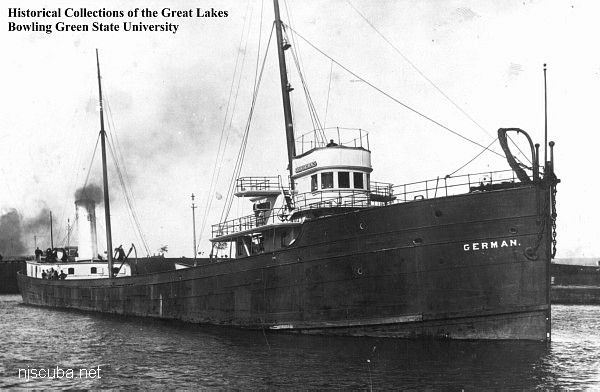Miscellaneous Metals
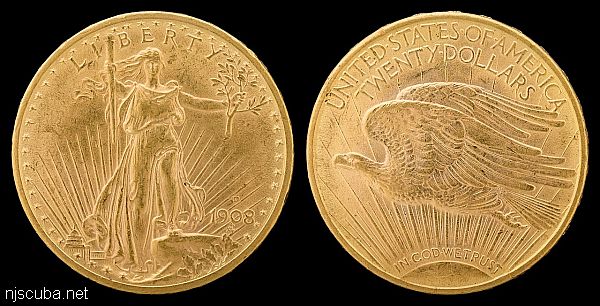
These metals are of little interest as artifacts. They are, however, interesting for other reasons. Tin and zinc are used in copper-based alloys such as bronze, and the diver's favorite - brass. Aluminum, lead, and titanium are all used in the manufacture of many items of dive gear, not the least of which is tanks. And zinc is used in pure form in sacrificial anodes which protect the other metal parts of your dive boat from corrosion, while chromium and nickel are major constituents of many marine alloys. Wouldn't we all like to find a trove of silver and gold!
Aluminum
- symbol Al
- atomic number 13
- atomic weight 26.98154
- melting point 660.37°C
- boiling point 2,467°C
- specific gravity 2.6989 at 20°C
- valence +3
Aluminum is a silver-white metal with a face-centered cubic crystalline structure. It is a member of group IIIa of the periodic table. It is ductile, malleable, and an excellent conductor of heat and electricity. The pure metal is soft, but it becomes strong and hard when alloyed.
Although less conductive than copper wire of the same diameter, aluminum wire is often used for high-tension power transmission because it is lighter and cheaper. Although it is chemically very reactive, aluminum resists corrosion by the formation of a self-protecting oxide coating. It is rapidly attacked by alkalies ( such as lye ) and by hydrochloric acid.
Although it is the most abundant metal in the earth's crust ( about 8% by weight ), aluminum does not occur uncombined but is an important constituent of many minerals, including clay, bauxite, mica, feldspar, alum, cryolite, and the several forms of aluminum oxide ( alumina ) such as emery, corundum, sapphire, and ruby.
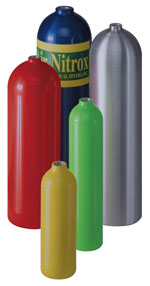
Commercially, aluminum is prepared by the Hall-Hroult process, which consists essentially of the electrolysis of alumina prepared from bauxite and dissolved in fused cryolite. In an electric furnace, an iron tank lined with carbon serves as the cathode and large blocks of carbon serve as the anode; the electric current generates enough heat to keep the cryolite melted. Molten aluminum collects at the bottom of the tank, and oxygen is liberated at the anode. The anode is consumed as it combines with the oxygen to form carbon dioxide.
Aluminum foil is used as a wrapping material. Aluminum powder is used in paints. A mixture of powdered aluminum and iron oxide, called thermite, is used in welding because of the large amount of heat liberated when it is ignited. The development of methods for coloring aluminum led to its use in jewelry, on wall surfaces, and in colored kitchenware. Important alloys of aluminum include duralumin, aluminum bronze, and aluminum-magnesium; they are used extensively in aircraft and other industries.
Although the metal was not isolated until the 19th century, the use of aluminum compounds originated in antiquity. The Romans used various aluminum compounds as astringents; they called these alum. Sir Humphry Davy and other chemists in the early 19th century recognized aluminum as the metal and alumina as its oxide. H. C. Oersted succeeded in obtaining impure aluminum in 1825, but Friedrich Wahler had greater success and is usually credited with its first isolation, in 1827. H. E. Sainte-Claire Deville first prepared inexpensive pure metal in 1854 and set about perfecting a process for its commercial production.
However, it was not until 1886 that the process by which aluminum is produced today was discovered independently by C. M. Hall, a student at Oberlin College, and Paul Hroult, a French metallurgist. The process depends critically on the availability of cheap hydroelectric power. The two major producers of aluminum are Kaiser and Alcoa.
Titanium
- symbol Ti
- atomic number 22
- atomic weight 47.88
- melting point 1,675°C
- boiling point 3,260°C
- specific gravity 4.54 at 20°C
- valence +2, +3, or +4
Titanium is a lustrous silver-white metal that exhibits allotropy; below about 880°C it has a hexagonal crystalline structure, but above that temperature, it changes to a cubic crystalline structure. The metal is strong and has low density; it is ductile when pure and malleable when heated. Its chemical properties resemble those of zirconium, the element below it in group IVb of the periodic table. When heated, it ignites and burns in air. It is the only element that burns in nitrogen.
Titanium is very corrosion-resistant and is unattacked by most acids, by moist chlorine gas, or by common salt solutions. Several of its compounds are commercially important. Pure crystalline titanium dioxide ( titania ) is used as a gemstone. The dioxide is also widely used as a paint pigment, especially for exterior paints. Titanates are formed from the dioxide, which is weakly acidic. An interesting example is barium titanate, which is piezoelectric and can be used as a transducer for the interconversion of sound and electricity.
Titanium tetrachloride, a liquid, fumes in moist air; it is used for smoke screens and in skywriting. It is also an important catalyst in the polymerization of olefins. Titanium esters, formed by the reaction of the tetrachloride with alcohols, are used as waterproofing agents on fabrics. Titanic sulfate is used as a textile mordant.
Titanium metal and its alloys are light in weight and have very high tensile strength, even at high temperatures. These metals are utilized in aircraft and spacecraft construction and in naval ships, guided missiles, and lightweight armor plate for tanks.

Titanium compounds are widely distributed in nature. Rutile, the native dioxide, and ilmenite, which contains, besides titanium, iron, and oxygen, are its chief sources. The metal cannot be produced by reduction of the dioxide, because titanium reacts with both oxygen and nitrogen at high temperatures. One method used consists of passing chlorine over ilmenite or rutile, heated to redness with carbon. Titanium tetrachloride, which is formed, is condensed, purified by fractional distillation, and then reduced with molten magnesium at 800°C in an atmosphere of argon.
Titanium is present in the sun and certain other stars, in meteorites, and on the moon. Titanium dioxide causes the star effect in certain sapphires and rubies. The element was discovered ( 1791 ) by William Gregor and rediscovered ( 1795 ) by M. H. Klaproth, who gave it its present name.
Nickel
- symbol Ni
- atomic number 28
- atomic weight 58.69
- melting point 1453°C
- boiling point 2732°C
- specific gravity 8.902 at 25°C
- valence 0, +1, +2, +3, or +4
Nickel is a hard, malleable, ductile, lustrous, silver-white metal with a face-centered cubic crystalline structure. It takes a high polish. In its magnetic properties and chemical activity, it resembles iron and cobalt, the elements preceding it in group VIII of the Periodic Table. It is a fairly good conductor of heat and electricity. In its familiar compounds, nickel is bivalent, although it assumes other valences. It also forms a number of complex compounds. Most nickel compounds are blue or green. Nickel dissolves slowly in dilute acids but, like iron, becomes passive when treated with nitric acid. Finely divided nickel adsorbs hydrogen.
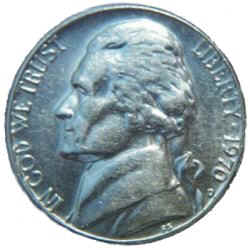
Commercially, the most important compound is the sulfate, which is used in electroplating, as a mordant in dyeing, in preparation of other nickel compounds, and in paints, varnishes, and ceramics. The nickel oxides are also important; they are used in ceramic glazes, in glass manufacture, in the preparation of alloys, and in the Edison battery. Pure wrought nickel in the form of sheets and wire has many uses. Finely divided nickel is used as a catalyst, e.g., in the hydrogenation of oils. Nickel is used as a protective and ornamental coating for less corrosion-resistant metals, especially iron and steel; it is applied by electroplating and by other methods. It is used in nickel-cadmium and nickel-metal-hydride ( NiMH ) storage batteries.
The major use of nickel is in the preparation of alloys. The chief attributes of nickel alloys are strength, ductility, and resistance to corrosion and heat. Many stainless steels contain nickel. Nickel steels are used in safes and armor plate. Alloys of nickel, iron, and chromium ( such as Incoloy - 42% nickel, 22% chromium, 22% iron ) are extremely resistant to corrosion.
Alloys of nickel and copper are widely used, e.g., Monel metal ( 66% nickel, 31% copper, ) used in many marine applications, nickel bronze, and nickel silver. The so-called German silver is a nickel-copper alloy. Nickel-copper alloys are used in coinage; the American "nickel" coin is about one-fourth nickel. Constantan is a nickel-copper alloy used in thermocouples.
Other alloys of nickel include nickel-chromium alloys such as Inconel ( 72% nickel, 16% chromium ) and Hastelloy ( 62% nickel, 16% chromium 16% molybdenum ) used in corrosive environments, and Nichrome, used in heating elements. Alloys of aluminum, nickel, cobalt, and iron ( such as Alnico ) are used to make magnets, and alloys of nickel, chromium, and cobalt are used structurally in jet engines.
Nickel occurs in a number of minerals; its chief ores are pentlandite and pyrrhotite ( nickel-iron sulfides ) and garnierite ( nickel-magnesium silicate. ) Nickel is present in most meteorites. It is also found in trace amounts in plants and animals. Nickel sulfide ores are concentrated by the flotation process, then smelted or roasted to partially convert them to the oxide form, and further treated in a Bessemer converter to form a matte. The metal is separated from copper and other metals present in the Bessemer matte by electrorefining or chemical methods. The end product is in the form of nickel cathodes, pellets, or powder. Nickel was discovered in 1751 by A. F. Cronstedt in kupfernickel ( niccolite ), a copper-colored nickel arsenide mineral.
Chromium
- symbol Cr
- atomic number 24
- atomic weight 51.996
- melting point 1857°C
- boiling point 2672°C
- specific gravity 7.2 at 25°C
- valence +2, +3, +6
Chromium is a silver-gray, lustrous, brittle, hard metal that can be highly polished. It is found in group VIb of the periodic table. It does not tarnish in air, but burns when heated, forming the green chromic oxide. When combined with oxygen, besides yielding chromic oxide, which is used as a pigment, it forms chromic anhydride ( the red trioxide and anhydride of chromic acid. )
With other metallic elements, e.g., lead and potassium, together with oxygen, it forms the chromates and dichromates. These compounds are salts of chromic acid and are used as pigments in paints, in dyeing, and in the tanning of leather. Chrome yellow, a pigment, consists largely of lead chromate. Other chrome colors are black, red, orange, and green. In the chrome process for tanning leather, a dichromate is used, and chromium hydroxide, a basic compound of chromium, hydrogen, and oxygen, is precipitated and held in the leather. The hydroxide is used also as a mordant in dyeing cloth. A mixture of potassium dichromate and sulfuric acid is used as a powerful agent for cleaning laboratory glassware.
Chromium is a comparatively rare element, never occurring by itself in nature but always in compounds. Its chief source is the mineral chromite, which is composed of iron, chromium, and oxygen and is found principally in the nations of the former Soviet Union, South Africa, Zimbabwe, Turkey, and the Philippines. The element, in the form of chromic oxide, gives the greenish tint to the emerald and the aquamarine. Metallic chromium is prepared by reduction of the oxide by aluminum or by carbon. It is used in plating other metals because of its hardness and non-tarnishing properties. Chromium was discovered in 1797 by L. N. Vauquelin.

In alloys with other metals, chromium contributes hardness, strength, and heat resistance. Its most important use is in the steel industry, where it is a constituent of several alloy steels, e.g., chromium steel or chrome steel. Stainless steel contains from 11% to 18% chromium. An alloy of nickel and chromium, often called Nichrome, is widely used as a heating element in electric toasters, coffeepots, and other appliances. Stellite is an extremely hard alloy of cobalt, chromium, and tungsten, with small amounts of iron, silicon, and carbon; it is used in metal cutting tools and for wear-resistant surfaces. A similar alloy, with molybdenum instead of tungsten, is used in surgical tools since it does not react with body fluids.
Zinc
- symbol Zn
- atomic number 30
- atomic weight 65.38
- melting point 419.58°C
- boiling point 907°C
- specific gravity 7.133 at 25°C
- valence +2
Zinc is a lustrous bluish-white metal. It is found in group IIb of the periodic table. It is brittle and crystalline at ordinary temperatures, but when heated to between 110°C and 150°C it becomes ductile and malleable; it can then be rolled into sheets. It is a fairly reactive metal. Although it is not abundant in nature, it is of great commercial importance. It is used principally for galvanizing iron but is also important in the preparation of certain alloys, e.g., Babbitt metal, brass, German silver, pot metal, and sometimes bronze. It is used for the negative plates in certain electric batteries and for roofing and gutters in building construction. Since the metal reacts with dilute mineral acid to liberate hydrogen, it is often used for this purpose in the laboratory.
Zinc compounds are numerous and are widely used. Perhaps most important is zinc oxide, or zinc white, a versatile compound with many uses. Other zinc compounds include zinc chloride, used as a wood preservative, in soldering fluxes, as a mordant in dyeing textiles, and in adhesives and cements; and zinc sulfide, used in making lithopone as well as television screens and X-ray apparatus. The chromate, zinc yellow, serves as a pigment; sodium zincate, as a water softener and as a flocculating agent in water purification. The crystalline sulfate is known commonly as white vitriol.
Zinc is essential to the growth of many kinds of organisms, both plant and animal. It is a constituent of insulin, which is used in the treatment of diabetes. Chief sources of zinc are the sulfide ore, zinc blende, or sphalerite ( called also blende or "Black Jack" ) zincite, an oxide; calamine, a silicate; and smithsonite, the zinc carbonate.
Zinc ores are widely and abundantly distributed throughout the world. The United States is the leading producer. The metallurgy of zinc depends upon the ore used. The sulfide ore is roasted to the oxide, then mixed with coal and heated to 1,200°C. The zinc vaporizes and is condensed outside the reaction chamber and cast into blocks called spelter. In another method the ore is processed by flotation, filtering, roasting, and leaching; the resulting solution is filtered and the zinc removed by electrolysis.
Tin
- symbol Sn
[ Latin stannum ] - atomic number 50
- atomic weight 118.69
- melting point 231.9681°C
- boiling point 2,270°C
- specific gravity 5.75 (gray), 7.3 (white)
- valence +2 or +4
Tin exhibits allotropy; above 13.2°C it is a lustrous, silver-white, highly crystalline metal with tetragonal structure. A brittle form with orthorhombic structure may exist above 161°C. Below 13.2°C pure tin tends to become a gray powder, a change commonly designated "tin pest" or "tin disease."
Tin is very soft ( only slightly harder than lead ) and malleable; it can be rolled, pressed, or hammered into extremely thin sheets ( tin foil. ) When iron or steel is dipped into molten tin, a layer of tin is deposited on the surface. A tin coating may also be applied by electroplating, which uses less tin. The tin serves to prevent rusting since it is barely affected by moisture. The tin plate used in tin cans is an iron or steel sheet coated with tin. A tin coating is used to protect copper and other metals.
Tin is a component of antifriction metal, bell metal, pot metal, britannia metal, bronze, gunmetal, pewter, solder, and other alloys. Tin forms stannous compounds, in which it has valence +2, and stannic compounds, in which it has valence +4, as well as stannites, stannates, and other complex salts. Industrially useful compounds of tin include stannous chloride, important as a reducing agent, as a mordant in dyeing, and for weighting silk; stannic chloride, for the last two purposes and to stabilize perfume and color in soap; stannic oxide, for the preparation of white porcelain enamelware; and sodium stannite, a reducing agent. Stannous fluoride is added to toothpaste and water supplies to prevent tooth decay.
Tin forms a number of toxic organometallic compounds that are used as fungicides, catalysts, and for other uses. Tin very rarely occurs uncombined in nature; the dioxide, which occurs as cassiterite, or tinstone, is the only ore of commercial importance. It is obtained chiefly from Bolivia, Indonesia, the Malay Peninsula, Congo (Kinshasa), and Nigeria. The tin mines of Cornwall, England, were formerly the principal source.
The metal is prepared from cassiterite by heating in the reverberatory furnace. The ore from the mines is first given special treatment, and the "concentrates" thus obtained are mixed with coal in the furnaces. Tin was known and used by man at least as early as the Bronze Age. The metal and its compounds were known and used by the alchemists. In 1673, Robert Boyle published a description of experiments on the oxidation (calcination) of tin. The metal was recognized as an element by Lavoisier.
Lead
- symbol Pb [ Latin plumbum ]
- atomic number 82
- atomic weight 207.2
- melting point 327.502°C
- boiling point about 1,740°C
- specific gravity 11.35 at 20°C
- valence +2 or +4
One of the oldest metals used by humanity, lead was known to the ancient Egyptians and Babylonians. The Romans used it for pipes and in solder. It was one of the first metals mined in North America, where it was sought after especially for making shot.
Properties and Isotopes
Lead is a dense, relatively soft, malleable metal with low tensile strength. It is a poor conductor of electricity and heat. Lead has a face-centered cubic crystalline structure. It is below tin in Group IVa of the periodic table. Although lead has a lustrous silver-blue appearance when freshly cut, it darkens upon exposure to moist air because of the rapid formation of an oxide film; the film protects the metal from further oxidation or corrosion. All lead compounds are poisonous. Lead resists reaction with cold concentrated sulfuric acid but reacts slowly with hydrochloric acid and readily with nitric acid.
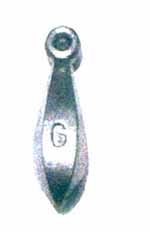
The element has four naturally occurring stable isotopes, three of which result from the decay of naturally occurring radioactive elements ( thorium and uranium. ) Since this decay takes place at a constant rate, it is possible to predict either the maximum age of a lead-containing rock or its composition at some earlier date, as long as the rock has not been chemically altered. There are 25 known radioactive isotopes of lead, some of which occur naturally in small amounts.
Natural Occurrence and Processing
Although lead is seldom found uncombined in nature, its compounds are widely distributed throughout the world, principally in the ores galena, cerussite, and anglesite. Australia, the United States, Canada, and Russia are among the chief producers of lead. In the United States galena ( a lead sulfide ore ) is mined in southern Missouri, with some ore coming from the western states. The ore is concentrated by the flotation process and is then refined by electrolysis or by smelting. About one-third of the lead used in the United States is so-called secondary lead, i.e., lead and lead alloys reclaimed chiefly from automobile batteries.
Uses

The single most important commercial use of lead is in the manufacture of lead-acid storage batteries. It is also used in alloys such as fusible metals, antifriction metals, solder, pot metal, and type metal. Shot lead is an alloy of lead, antimony, and arsenic. Lead foil is made with lead alloys. Lead is used for covering cables and as a lining for laboratory sinks, tanks, and the "chambers" in the lead-chamber process for the manufacture of sulfuric acid. It is used extensively in plumbing. Because it has excellent vibration-dampening characteristics, lead is often used to support heavy machinery and was used in the foundations of the Pan Am Building built over Grand Central Station in New York City. Lead is also employed as protective shielding against X rays and radiation from nuclear reactors.
Lead has many commonly used compounds. Commercially important are the lead oxides, which have many uses. Litharge is lead monoxide, PbO; red lead is lead tetroxide, Pb3O4; lead peroxide or dioxide, PbO2, is used in matches, as a mordant in dyeing, and as an oxidizing agent. White lead, 2PbCO3-Pb(OH)2 ( basic lead carbonate, ) is an important pigment used in paints, putty, and ceramics. Chrome yellow, PbCrO4, is a bright yellow pigment. "Sublimed white lead, " PbSO4-Pb(OH)2 ( basic lead sulfate, ) is also used as a pigment. Lead acetate ( sugar of lead ) is used as a mordant, and lead azide, Pb(N3)2, is employed as a detonator for explosives. Lead arsenate is used as an insecticide. Tetraethyl lead, used as an antiknock compound in gasoline, is now banned for environmental reasons in the United States and other countries.
Although lead and most of its compounds are only slightly soluble in water, the use of lead pipe to carry drinking water is dangerous, since lead is a cumulative poison that is not excreted from the body. The "lead" of lead pencils does not contain lead; it is a mixture of graphite and clay.
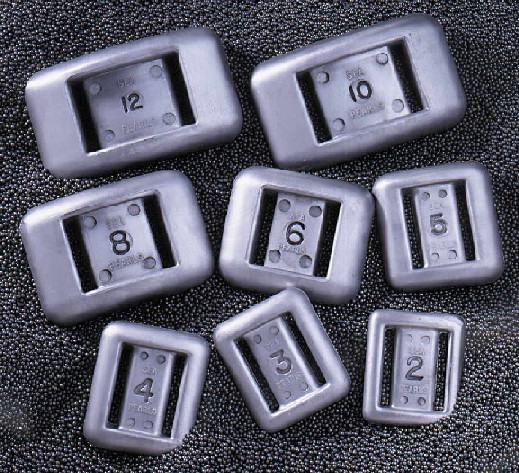
Pot Metal
"Pot metal" is a catch-all term that covers any inexpensive metal or mixture of metals that will melt in a pot. Generally, this includes zinc, aluminum, lead, tin, bismuth, and other base metals or combinations with a melting point of approximately 900-1200°F, compared to 1800°F for brass and bronze. Pot metal was and is widely used for castings of small parts and fixtures, plumbing, and jewelry. The term "pot metal" is also used to refer to low-grade cast iron ( used to make pots. )
Early alloy technology was simply the ability to melt materials, get them to mix and stay in solution, pour them into a mold and end up with a finished product that had no significant shrinkage, was machineable or polishable, would hold together - at least for a reasonable period of time - and looked presentable. Every foundry had their own unique mixture which was formulated, more than any other factor, by the availability and cost of raw material or scrap.
Around 1900, zinc for die-casting was available in 98% pure form and was then alloyed with 6% tin and 3% copper to give it some strength and make it somewhat castable. It was discovered later that a bit of aluminum (0.5%) would help. Unfortunately, it was discovered later that this combination produced a material that had very poor dimensional stability and promoted what is called "intergranular corrosion." This is the term used to describe the growing, warping, and cracking of deteriorated pot metal castings. Over time, micro-granularities in the metal oxidize. The oxides expand with moisture, further wedging and enlarging cracks. Impurities in the cast metal can accelerate the process. Pot metal parts can become brittle and crumbly in just a few years.
In 1922 it was discovered that aluminum was not the culprit in intergranular corrosion so much as were lead, cadmium and tin, and that if these impurities were eliminated, big improvements would be made. Unfortunately, due to so many years of alloying tin with zinc, it was difficult to limit tin contamination, because for economic reasons it was customary (and still is) to rely on the scrap market to supply ingot to foundries. In 1926 it was discovered that a very small amount of magnesium (0.1%) would help counteract other impurities such as lead, tin, etc., and provide more stability and reduce intergranular corrosion. In 1929 the processing of raw ingot was improved to yield 99.99% pure zinc from which the alloyers could then add just those ingredients they specifically wanted, thereby creating a bit of sophistication to the process.
Another popular method to improve "meltability" in the early days of ignorance was to add a bit of lead to the pot. This was absolutely devastating to the problem of stability and intergranular corrosion. Today's standards permit a maximum lead content of .005%. This is considered to be so important that most die casting plants will not even allow a lead hammer to be brought into the building.
Silver
- symbol Ag [ Latin argentum ]
- atomic number 47
- atomic weight 107.8682
- melting point 961.93°C
- boiling point 2,212°C
- specific gravity 10.5 at 20°C
- valence +1 or +2
Pure silver is nearly white, lustrous, soft, very ductile, malleable, and an excellent conductor of heat and electricity. In many of its properties, it resembles copper and gold, the elements above and below it in group Ib of the periodic table.
Silver is not a chemically active metal, being considerably below hydrogen in the electromotive series. It is, however, attacked by nitric acid ( forming the nitrate ) and by hot concentrated sulfuric acid. Silver is almost always monovalent in its compounds, but an oxide, a fluoride, and a sulfide of divalent silver are known. It does not oxidize in air but reacts with the hydrogen sulfide present in the air, forming silver sulfide ( tarnish ). Silver nitrate is the most important compound. Silver chloride, bromide, and iodide are used in still photography because of their sensitivity to light. Solutions of certain protein complexes containing silver are used as antiseptics. A mirror can be made by coating glass with metallic silver derived from the reaction of a solution of a silver ammonia complex with an organic reducing agent such as formaldehyde.
Although silver can be found uncombined in nature, most silver used today is obtained from its ores. Among these the most important are argentite or silver glance ( silver sulfide, ) which is found associated with other metal sulfides, e.g., galena; horn silver or cerargyrite ( silver chloride; ) two ores composed of silver and antimony ( in different proportions ) called pyrargyrite ( or ruby silver ore ) and stephanite; and another ore composed of silver and arsenic sulfides called proustite. Mexico, the United States ( Idaho, Montana, Arizona, Colorado, Utah, Nevada, California, New Mexico, and Texas, ) the former USSR, Peru, Australia, and Canada are the leading producers.
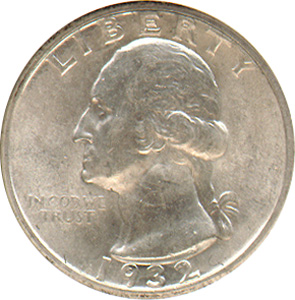
The metal is prepared in various ways depending upon the nature of its occurrence; the greatest quantity is obtained in connection with the refining of lead and copper. It is separated from lead by the Parkes process, which is based upon the fact that silver is soluble in molten zinc whereas lead is not. The cyanide process has largely replaced an amalgam process in which silver is dissolved in mercury. Some of the silver produced today is used, as in the past, in making coins. Large quantities are used for silver utensils and jewelry, and in plating, tableware electrolytically from a solution of sodium silver cyanide.
Alloys of silver with copper, in which the copper adds hardness, are important. Coin silver is an alloy consisting of 90% silver and 10% copper. Sterling silver contains 92.5% silver and 7.5% copper. Silver alloys are used in dental amalgams and for electrical contacts. Silver was one of the first metals to be used by humans.
Gold
- symbol Au [ Latin aurum = shining dawn ]
- atomic number 79
- atomic weight 196.9665
- melting point 1, 064.43°C
- boiling point 2,808°C
- specific gravity 19.32 at 20°C
- valence +1 or +3
Gold is very ductile and is the most malleable metal; it can be beaten into extremely thin sheets of gold leaf. Only silver and copper, which are above it in group Ib of the periodic table, are better electrical conductors. Gold is chemically inactive. It is unaffected by moisture, oxygen, or ordinary acids but is attacked by the halogens. Aqua regia ( a mixture of nitric and hydrochloric acids that liberates chlorine ) is so named for its ability to dissolve gold, the "king" of the metals. Gold forms both aurous ( univalent ) and auric ( trivalent ) compounds; auric chloride and chloroauric acid are its most common compounds.
A relatively soft metal, gold is usually hardened by alloying with copper, silver, or other metals. White gold, a substitute for platinum, is an alloy of gold with platinum, palladium, nickel, or nickel and zinc. Green gold, also used by jewelers, is usually an alloy of gold with silver. Alloys of gold with copper are reddish yellow and are used for coinage and jewelry. Gold is often found in nature alloyed with other metals; when more than 20% of silver is present the alloy is called electrum.
The gold content of an alloy is commonly stated in carats, a carat being 1/24 part by weight of the total mass. Pure gold is therefore 24 carats fine; an alloy that is 75% gold is 18 carats fine. Fineness is sometimes expressed in terms of parts per thousand; thus gold containing 10% of other metals is said to have a fineness of 900.
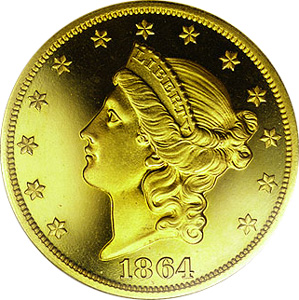
Gold is widely distributed on the earth; although large amounts are present also in seawater, the cost of current methods for recovering it exceeds its value. Most gold is found in the metallic state in the form of dust, grains, flakes, or nuggets. It occurs, usually in association with silver or other metals, in quartz veins or lodes so finely disseminated that it is not visible. It is found also in alluvial placer deposits, which are worked by panning, dredging, and hydraulic mining.
Gold is extracted from its ores by mechanical means and separated from other metals by chemical processes, notably the cyanide process, the amalgamation process, and the chlorination process ( in this the ore is oxidized and chlorinated and the gold precipitated with hydrogen sulfide. ) It also occurs in compounds, notably telluride minerals.
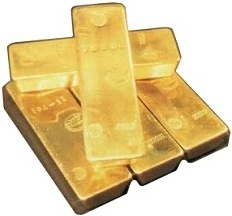
Gold has been known from prehistoric times and was possibly the first metal used by humans. It was valued for ornaments, and magical efficacy was attributed to it. In the Middle Ages, alchemists sought to transmute baser metals into gold. The quest for gold stimulated European explorations and conquests in the Western Hemisphere, and its discovery has led to many a gold rush. The chief producers are South Africa, the United States ( especially in South Dakota and Nevada, ) Russia, Australia, and Canada.
compiled from various sources

